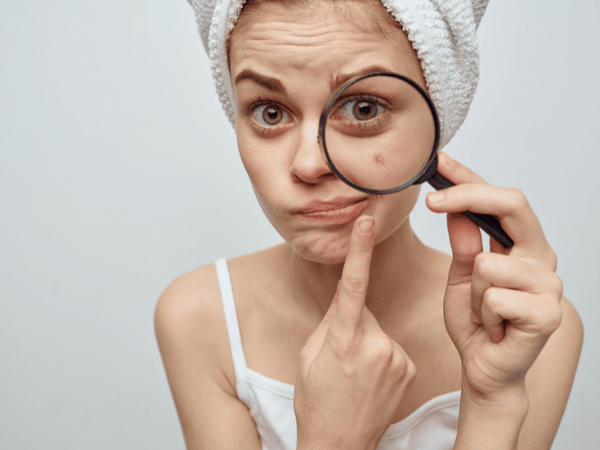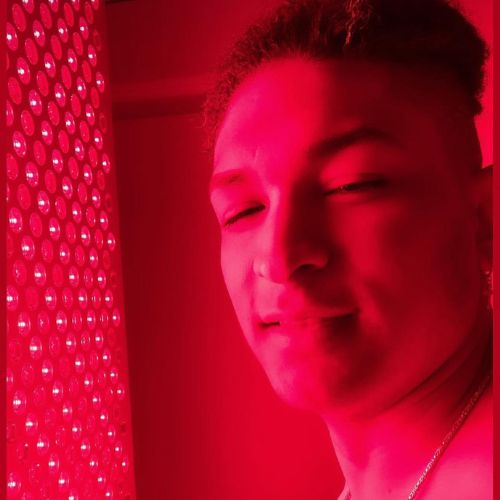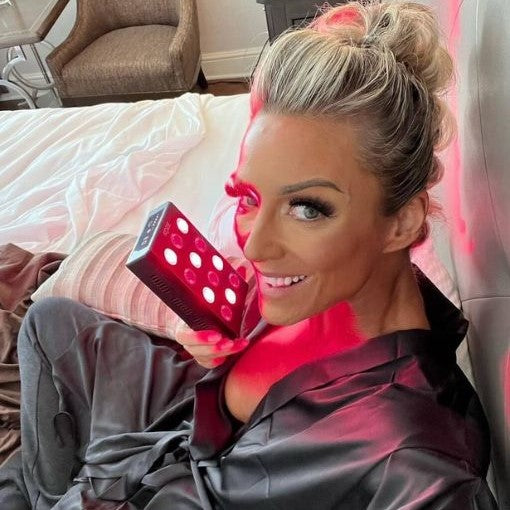
Treating Acne with Red Light Therapy
Treating Acne with Red Light Therapy
If you’ve struggled with acne, you know how frustrating it can be to find the right solution. There are so many products and treatments out there, but one option that’s getting a lot of buzz lately is red light therapy. It’s a gentle, natural way to reduce acne by calming inflammation, killing bacteria, and helping your skin heal.
In this post, we’ll break down how red light therapy works, why it’s great for acne, and how it can help you get clearer skin without relying on harsh treatments or chemicals.
Benefits of Using Red Light Therapy for Acne
Red light therapy offers several benefits for treating severe acne, making it an attractive option for many people. It’s a gentle, non-invasive treatment that can be easily incorporated into your skincare routine. Here are some of the key benefits:
Non-invasive and Pain-Free
One of the greatest advantages of red light therapy is that it’s completely non-invasive. Unlike other acne treatments like chemical peels or medications, red light therapy doesn’t involve any harsh chemicals or painful procedures. It’s gentle on your skin and doesn’t cause irritation, making it suitable for all skin types, including sensitive skin.
Reduces the Need for Medications
Many mild to moderate acne treatments rely on medications like antibiotics or topical creams, which can sometimes have side effects. Red light therapy can be used alongside or as an alternative to these medications, helping to reduce the need for them. For people looking for a more natural solution, red light therapy is a great way to manage facial acne without relying on prescriptions.
Long-Term Improvements
The effects of LED light therapy are not just short-term. With consistent use, red light therapy helps improve skin health over time. It not only reduces acne breakouts but also helps prevent future ones by keeping inflammation and bacteria in check. Plus, it can improve skin texture and reduce acne scars, leading to smoother, healthier-looking skin in the long run.
What Causes Acne?

Acne is caused by a combination of factors, and understanding these can help you manage it better. Whether you experience the occasional breakout or struggle with chronic acne, knowing what’s happening under your skin is key to finding the right treatment.
Common Causes of Acne
Here are some of the most common reasons people get acne:
- Hormonal changes: Hormones can trigger your skin’s oil glands to produce more oil (sebum), especially during puberty, pregnancy, or menstrual cycles.
- Excess oil production: When your skin produces too much oil, it can clog pores and trap bacteria.
- Clogged pores: Dead skin cells can build up and block your pores, which leads to blackheads, whiteheads, and pimples.
- Bacterial growth: Acne-causing bacteria, known as Propionibacterium acnes (P. acnes), can grow in clogged pores, causing inflammation and redness.
- Inflammation: When your body fights off the bacteria, it can trigger inflammation, making acne bumps red and swollen.
Types of Acne
There are different types of acne, and each one behaves a little differently:
- Whiteheads and blackheads: These are mild forms of acne caused by clogged pores. Whiteheads are closed pores, while blackheads are open and exposed to air.
- Papules and pustules: These are more inflamed types of acne vulgaris. Papules are small, red bumps, while pustules contain pus.
- Cystic and nodular acne: These are severe types of acne that develop deep in the skin and can be painful. They often leave scars if not treated properly.
Understanding these causes and types of acne is important when choosing a treatment of acne vulgaris, methods like red light therapy to target specific acne problems.
What is Red Light Therapy?
Red light therapy is a treatment that uses low-wavelength red light to treat the skin and reduce inflammation. It’s become a popular option for a variety of skin conditions, including acne, because it’s gentle and non-invasive. Unlike other acne treatments that can be harsh on the skin, red light therapy works with your body’s natural healing process.
How Red Light Therapy Works
Red light therapy works by penetrating the skin at a deeper level, reaching your cells and boosting their energy production. This energy helps your skin repair itself faster, reduces inflammation, and kills acne-causing bacteria.
Here’s how it works:
- Boosts cellular energy: The red light stimulates the mitochondria (the energy producers in cells), helping them work more efficiently.
- Reduces inflammation: It calms inflamed skin, which is especially helpful for reducing the redness and swelling associated with acne making it effective for inflammatory acne lesions
- Kills bacteria: Red light can help kill the bacteria that cause acne, reducing breakouts.
The Science Behind Red Light Therapy
Research shows that red light therapy can effectively treat acne by targeting the underlying causes of breakouts. Studies have found that regular use of red light therapy improves skin health by promoting healing, reducing inflammation, and even minimizing acne scars over time. This makes it a great option for people looking for a natural and long-term solution to acne.
How Red Light Therapy Helps Treat Acne
Red light therapy offers several benefits for treating acne by addressing some of the root causes of breakouts. Let’s explore how this treatment works specifically for acne.
Reducing Inflammation
One of the key ways red light therapy helps with acne is by reducing inflammation. Acne often results in red, swollen bumps caused by your body’s response to clogged pores and bacteria. Red light therapy calms this inflammation, helping reduce the redness and swelling around pimples.
By decreasing inflammation, red light therapy not only makes your skin look clearer but also helps speed up the healing process, allowing acne to disappear faster.
Killing Acne-Causing Bacteria
Acne is often worsened by Propionibacterium acnes, a type of bacteria that grows in clogged pores. Red light therapy can help kill this bacteria by penetrating deep into the skin and disrupting its growth. This makes it harder for the bacteria to survive and cause new breakouts.
By keeping the bacteria in check, red light therapy helps prevent future pimples from forming, reducing the overall severity of acne.
Promoting Skin Healing and Repair
In addition to reducing inflammation and bacteria, red light therapy promotes skin healing by boosting collagen production and increasing cell turnover. This helps repair the skin more quickly, especially after a breakout, and can improve the texture of your skin.
Over time, regular use of red light therapy can help reduce the appearance of acne scars and improve skin tone, making it smoother and more even.
How to Use Red Light Therapy Device for Acne
If you’re ready to try photodynamic therapy to treat acne, it’s important to know how to use it properly to get the best results. Whether you choose to use an at-home light device or visit a professional for treatment, following the right guidelines will help you achieve clearer skin.
At-Home Devices vs. Professional Treatment
You have two main options when it comes to red light therapy for acne: using an at-home device or getting professional treatments. Both can be effective, but they differ in terms of convenience, cost, and intensity.
-
At-Home Devices:
- Convenience: At-home devices are easy to use and allow you to incorporate red and blue light therapy into your skincare routine whenever it suits you.
- Cost-effective: While you’ll need to invest in a device upfront, at-home treatments can be more affordable in the long run compared to regular professional sessions.
- Consistency: Using the device regularly at home ensures consistent treatments, which is key to long-term success.
-
Professional Treatment:
- More powerful devices: Professional light treatments often use more powerful devices, which may provide faster results.
- Guidance from experts: A professional can help customize the treatment to suit your specific skin needs and monitor your progress.
Best Practices for Treatment Sessions
To get the best results from red light therapy for acne, follow these simple guidelines:
- Session Length: Use the red light for about 10 to 20 minutes per session. This is generally enough time for the light to penetrate your skin and start the healing process.
- Frequency: For acne, it’s recommended to use red light therapy 3 to 5 times a week. Some people may benefit from daily sessions, especially when starting out.
- Distance from Device: Keep your face or affected areas about 6 to 12 inches away from the light source. Make sure to follow the specific instructions provided with your device.
- Consistency is key: Regular use of red light therapy is important for seeing long-term improvements in your skin.
Are There Any Risks or Side Effects?
While red light therapy is generally considered safe and gentle, it’s important to be aware of any potential risks or side effects. Luckily, red light therapy has minimal side effects compared to other acne treatments, making it a great option for most people.
Minimal Side Effects
For the majority of users, red light therapy is completely safe and doesn’t cause any discomfort. However, here are a few things to keep in mind:
- Mild redness: Some users may experience slight redness or warmth on the skin after a session. This usually fades quickly and isn’t harmful.
- Dryness: Although rare, some people may notice their skin feels slightly drier after repeated use. Moisturizing regularly can help with this.
- Overuse: Using the device for too long or too frequently may cause skin irritation. It’s important to stick to the recommended session lengths and frequency.
Who Should Avoid Red Light Therapy?
While red light therapy is safe for most people, there are a few cases where it may not be suitable:
- Certain skin conditions: If you have photosensitive skin conditions or are on medications that cause sensitivity to type of light, you should consult with your doctor before trying red light therapy.
- Pregnancy: While there’s no evidence that red light therapy is harmful during pregnancy, it’s always a good idea to check with a healthcare professional beforehand.
In general, red light therapy is considered a low-risk, effective option used to treat acne, but it’s always smart to consult with a dermatologist or healthcare provider before starting any new treatment.
Conclusion
Red light therapy is a safe, natural, and effective skin care treatment for acne. By reducing inflammation, killing acne-causing bacteria, and promoting skin healing, it offers a gentle alternative to harsh chemicals and medications. Whether you use an at-home device or seek professional treatments, red light therapy can be easily integrated into your skincare routine to help you achieve clearer, healthier skin over time.
With minimal side effects and long-term benefits, laser therapy is a great option for those looking to manage acne without the need for invasive procedures or prescription medications. As always, it’s a good idea to consult a dermatologist before starting any new treatment, especially if you have sensitive skin or other underlying conditions.





